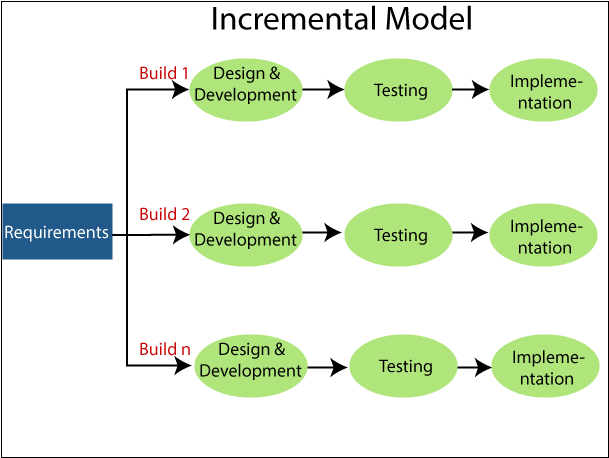Incremental Model in Software Engineering
Incremental Model is a software development process where requirements are divided into several stand-alone software development modules. In this example, each module passes through the requirement, design, development, implementation, and testing phases. That subsequent release of the module adds a feature to the previous release. The process will continue until the whole software is achieved.

Phases of incremental Model
Requirement analysis
In the first step of the incremental model, the product analysis expertise identifies the functional requirements and non-functional requirements. This stage plays an important role while developing software under the gradual method.
Design & Development
In this phase of the SDLC's incremental model, the system functionality and design of the development methodology has ended with success. When the software develops new practicality, the incremental model uses the design and development phase.
Testing
In the incremental model, the testing phase examines the performance of each existing function as well as additional functionality. In the testing phase, different methods are used to test the behavior of each task.
Implementation
In the implementation phase, coding is done for developing software. The design of the software, which is made in the designing phase, is now implemented practically, and final coding is done. Upon completion of this process, the quality of the product working will be enhanced and upgrade to the final system product.
Advantages of Incremental Model
- Errors are easy to detect.
- Easy to test and debug.
- Flexible.
- Easy to manage risk because it has been managed through iteration.
- The client is provided with significant functionality at an early stage.
Disadvantages of Incremental Model
- It needs good planning.
- The total cost is high.
- It needs well-defined module interfaces.